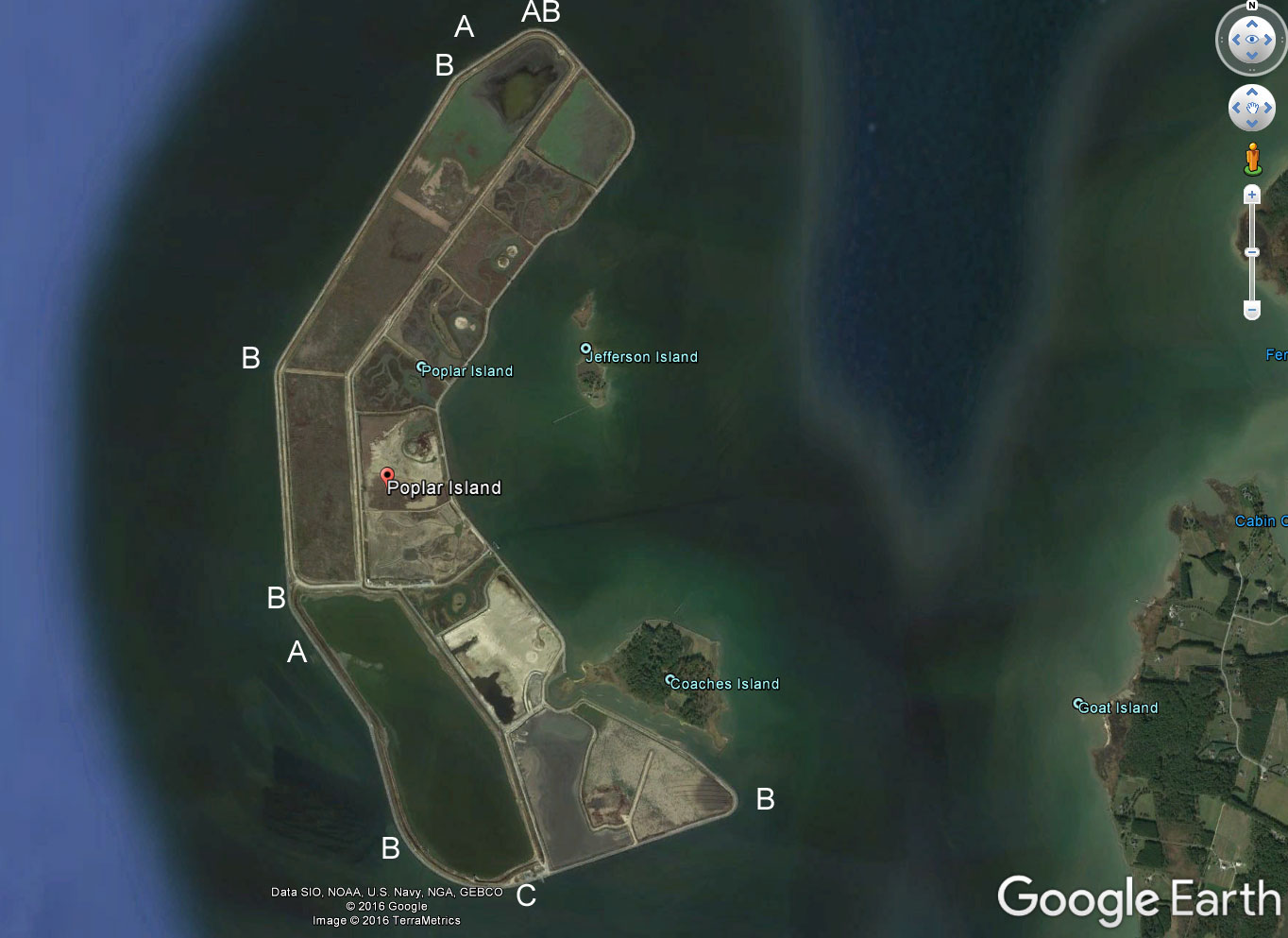Poplar has proved a reliable hotspot for many middle Chesapeake anglers through the years. The ice breakers (A on the graphic), points (B), and outflow pipes on the southern end (C) are commonly the best spots, although there are plenty of fish to be encountered all along the island’s northern, western, and southern rock walls. Refer to the chart, to get a glimpse of some of the best areas. But keep one more thing in mind: always start on the end of the island being hit by the current. On an outgoing, the northern end of the island is often the best place to be. And on an incoming, the south side is usually best. The current and waves are what dislodges small crabs, minnow, and other critters the rockfish are feeding on from their hiding places. So actively feeding fish will usually be found where that current is smacking the rocks.

Generally speaking, casting right up to the rocks is the most effective tactic. As you work your way along the island, however, be sure to occasionally pitch your lure parallel to the rocks, 30 to 50 yards off. In some areas fish regularly will congregate slightly off the rip-rap, so it’s well worth probing now and again. WARNING: On a high tide, these ice breakers (piles of rocks set outside of the island’s main rip-rap walls) may be completely submerged, and can cause serious damage to your boat and/or engine.
The fish found here are commonly suckers for soft plastics like BKDs and Bust ‘Ems. Use four to six inch tails, rigged to jig heads ranging from a quarter ounce to half an ounce. In low-light conditions, especially at dawn and dusk, casting topwater lures and chuggers can produce some exciting topwater explosions. Chartreuse and white are go-to colors, pink is often surprisingly effective, and dark reds or purples rule in very low light conditions. Rod and reel choice is purely a matter of personal preference, but when it comes to line, stick with braid. The zero-stretch nature of braid means you’ll feel the strike sooner, and set the hook stronger.
See our Chesapeake Bay Fishing Reefs Guide to get the lowdown on other mad-made wreck and reef hotspots in the Bay, plus a few in the ocean off the DelMarVa coast.
Sign up here to get the weekly FishTalk Chesapeake Bay and Mid-Atlantic fishing reports in your email inbox, every Friday by noon.